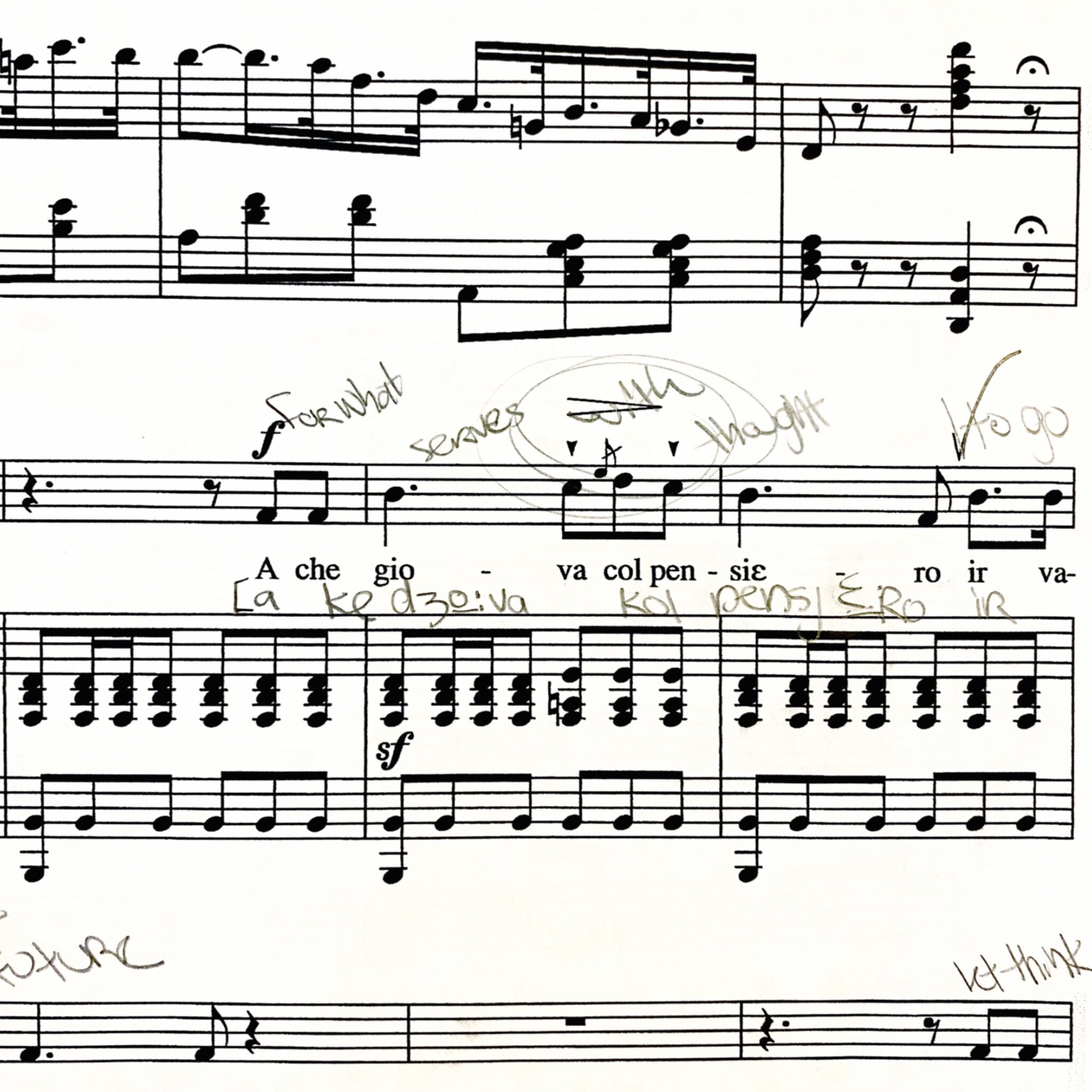Song Learning 101
So you want to learn a song, but you don’t know where to start? I’m here to help! Follow these steps to success, and as always, if you have any questions you can shoot me an email.
Road map
Look over your music and see if anything stands out to you that you are unsure of. Trills? Time signatures? Codas? Unfamiliar tempo markings? Do the research or ask your teacher for their meanings.
2. Translate the lyrics
Find a literal translation of the lyrics. Many books come with a poetic translation or an English version of the lyrics that will fit the rhythm of the piece, but it is important to know exactly what each word means, literally. This helps you know which words deserve the most attention. I usually write the translation above the staff.
3. Write out the lyrics in their original language three times (at least!)
This will help you memorize the lyrics. It is important to already know the meaning of the words so that you can commit all of that to memory. I like to write it by hand because it takes longer than typing and feels more personal.
4. Write in the IPA (international phonetic alphabet) below the lyrics
It is not necessary to rewrite the words you have already translated into IPA unless they are particularly tough to remember the pronunciation. Don’t forget the brackets and stress symbols! Yes, this applies even for English lyrics, as the spoken word is often pronounced differently when sung.
5. Speak the lyrics (Sprechstimme)
Sprechstimme is a dramatic speaking technique. Usually done at a higher pitch than your normal speaking voice, it can often sound very silly. It also helps to speak the lyrics in rhythm, so I recommend looking at the sheet music while you speak it.
6. Listen to three different recordings of the song (at least!)
This will help you fill in the blanks or identify any discrepancies. Maybe your favorite version took a few artistic liberties, so it is good to hear a few other versions. Later on, you can take ideas from other performances and combine them with your own ideas for a brand new very YOU performance.
7. Hum, lip trill, or sing on vowels
Now you can start to vocalize the melody! Try it a few different times with different sounds. Switch between “ooh” and “ahh” vowels. Keep an eye on where you take a breath or run out of air. It is important not to breathe in the middle of a word! Mark logical breath spots with a big check mark for big breaths or an apostrophe for small “catch breaths”.
8. Sing!
The moment you have been waiting for! Now you can add in the lyrics bit by bit. Keep an eye on your IPA and breath mark, and circle any sections that give you trouble. It helps to practice with an accompaniment so that you can hear how your part fits in with the background music.
9. More research
Oh, you thought we were done with this? It’s important to know about the composer, the greater work, and the context of the song within that work before performing the piece. Why is the character singing, anyways? What are they thinking while they sing? What was the composer thinking while they wrote the piece? These will all help inform your performance.
10.Perform!
You are now ready to perform! If you are nervous, take some deep breaths and visualize yourself performing the song perfectly. It’s going to be great! Break a leg :)
Let me know if this was helpful for you! Comment below if you have any more questions about the process. I know it seems like a lot, but it’s worth it! If you loved this guide and want some more individualized help, I am happy to work with you during a free 30 minute trial lesson!
Sparkle on,
Leah

